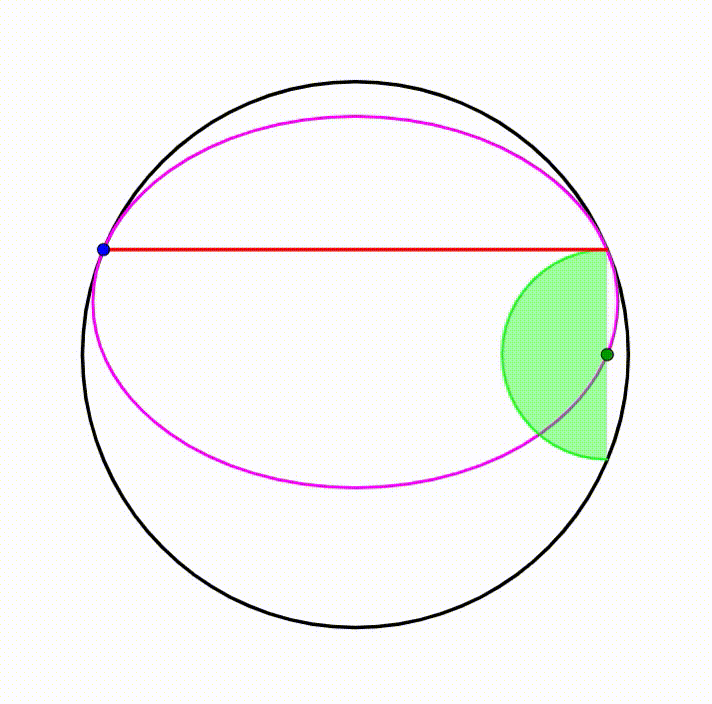Dynamic Geometry: P125
 The diagram shows a black circle. A horizontal red chord is drawn creating two circular segments, their respective heights are
and
. In each circular segment, we inscribe a semicircle. The centers of the semicircles need to move at the same horizontal rate. When the ratio of the green semicircle's radius to the radius of the blue semicircle is equal to
, the distance between their center can be expressed as
. Find
.
The diagram shows a black circle. A horizontal red chord is drawn creating two circular segments, their respective heights are
and
. In each circular segment, we inscribe a semicircle. The centers of the semicircles need to move at the same horizontal rate. When the ratio of the green semicircle's radius to the radius of the blue semicircle is equal to
, the distance between their center can be expressed as
. Find
.
The answer is 23.
This section requires Javascript.
You are seeing this because something didn't load right. We suggest you, (a) try
refreshing the page, (b) enabling javascript if it is disabled on your browser and,
finally, (c)
loading the
non-javascript version of this page
. We're sorry about the hassle.
From the previous similar problem Dynamic Geometry: P120 , we found that the purple locus of the centers of the two semicircles is an ellipse with the following equation with the origin of the x y -plane being at the center of the circle:
8 x 2 + 1 6 ( y − 4 5 ) 2 = 3 1 3
If we shift the origin O ( 0 , 0 ) to be at the center of the ellipse, then the equation becomes:
8 x 2 + 1 6 y 2 = 3 1 3
Since the centers of the two semicircles are moving at the same rate horizontally but in the opposite directions and an ellipse is symmetrical about its center, if the center of the blue semicircle is P ( x , y ) , then the center of the green semicircle is Q ( − x . − y ) . We note that the radius of the blue semicircle r 1 = y − 4 5 and the radius of the green semicircle is r 2 = y + 4 5 . Then we have:
r 1 r 2 y − 4 5 y + 4 5 6 4 y + 8 0 ( 2 0 + 4 1 8 5 ) y ⟹ y = 1 6 2 1 + 1 8 5 = 1 6 2 1 + 1 8 5 = ( 8 4 + 4 1 8 5 ) y − 1 0 5 − 5 1 8 5 = 1 8 5 + 5 1 8 5 = 4 1 8 5
Then
8 x 2 + 1 6 ⋅ 1 6 1 8 5 ⟹ x = 3 1 3 = 4
And P Q = 2 x 2 + y 2 = 2 1 6 + 1 6 1 8 5 = 2 2 1 . Therefore p + q = 2 1 + 2 = 2 3 .